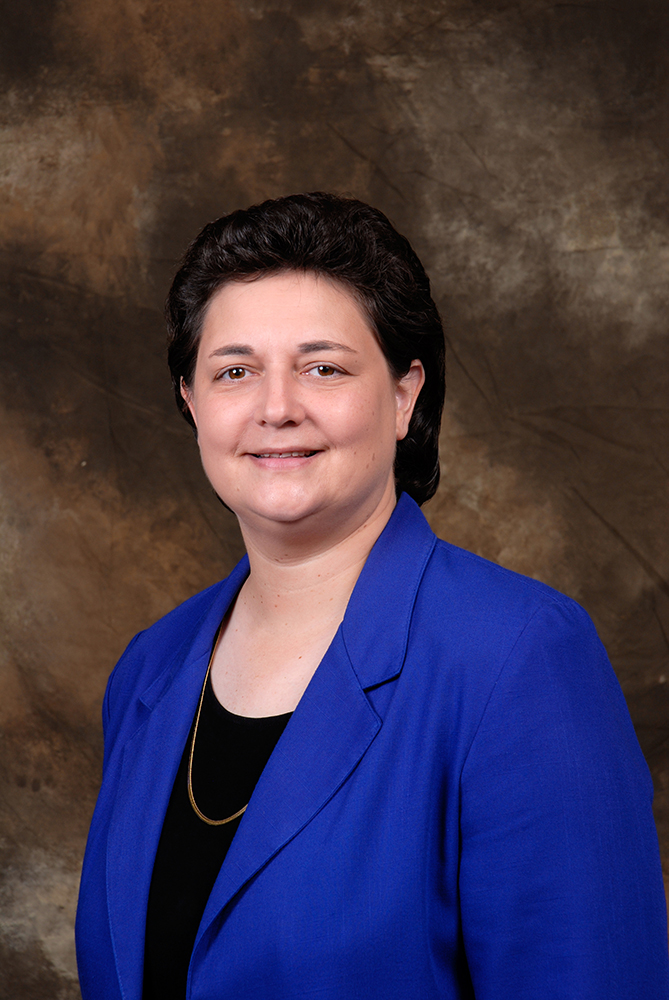 Lander University faculty member Lisa Brodhacker is a scientist whose goal is to make the perfect plastic telescope mirror for visible light. She cannot define what makes a plastic mirror perfect because she has not seen one. In fact, the scientific community has yet to build one.
Lander University faculty member Lisa Brodhacker is a scientist whose goal is to make the perfect plastic telescope mirror for visible light. She cannot define what makes a plastic mirror perfect because she has not seen one. In fact, the scientific community has yet to build one.
But she will try thanks to a contract she has been awarded by NASA's Jet Propulsion Laboratory (JPL) in Pasadena, Calif., which has given Lander $150,000 worth of equipment. Once assembled, the equipment will be used to build three lightweight plastic parabolic mirrors that NASA will use at ground stations to communicate with spacecraft in orbit. Unlike those used for visible images, mirrors for communication do not have to be perfect.
Brodhacker said NASA is interested in lightweight optics because plastic mirrors are much lighter than their glass counterparts, durable, and less expensive to build.
The equipment from JPL includes an air bearing, a compressor system, parts for an oven that Brodhacker will build, and chemicals.
The biggest component is the air bearing, which is mounted on a triangular metal support atop three 24" tall concrete columns. The air bearing spins a platter containing a polymer made of a specialized epoxy. The spinning process, which gives the mirror its parabolic shape, is vibration-free to protect the mirror surface. The oven surrounding the entire mechanism heats the spinning polymer until it hardens.
The three mirrors, measuring about two meters each, or about six and a half feet in diameter, will be built in a laboratory in the basement of Lander's Science Facility.
Once the mirrors are finished, they will be optically tested by Dr. Terry Richardson, a physicist and astronomer at The College of Charleston, then shipped to NASA which will apply the reflective surface.
Brodhacker, an assistant professor of chemistry at Lander, is not a newcomer to mirror-making technology. She said chemistry is the key to the process, and her experience includes a mirror project at the University of South Carolina, where she received her doctorate in organic chemistry.
She is also working with Alt-Az Initiatives for Lightweight Optics based at Cal Polytechnic State University in California. This group of international academics, scientists and astronomers specializes in developing low-cost, lightweight research telescopes smaller than the mirrors she will produce at Lander.
David Slimmer, dean of Lander's College of Science and Mathematics, said the mirror project is very prestigious for Lander and could lead to further contracts and more collaboration with NASA.
Brodhacker said the work is also important for students because they have a chance to witness a practical application of what they learn in the classroom.
Lander student Cody Brown of Calhoun Falls, a senior chemistry major and vice president of the university's American Chemical Society chapter, is assisting Brodhacker with the project as part of his course work. He is helping her build the oven and conducting research on thermal expansion, which can cause distorted mirror images.
Brown, a graduate of Calhoun Falls High School, said, "This project is really important because it gives me hands-on experience." Brown is scheduled to receive his bachelor's degree in chemistry in May of next year and plans to continue his education for an advanced degree in pharmacy.
Former Lander student Ankoma Anderson of Greenwood, who graduated with a chemistry degree last May, was also involved in research on the development of plastic mirrors. When he was a senior, Anderson received a $5,000 NASA grant through the South Carolina Space Grant Consortium and Brodhacker said Anderson's research was a precursor to the new mirror project.
As for why she is so interested in lightweight optics, Brodhacker said, "I've always been fascinated with space. I was one of those who climbed up on a roof with binoculars."